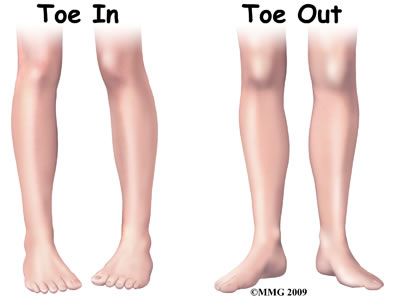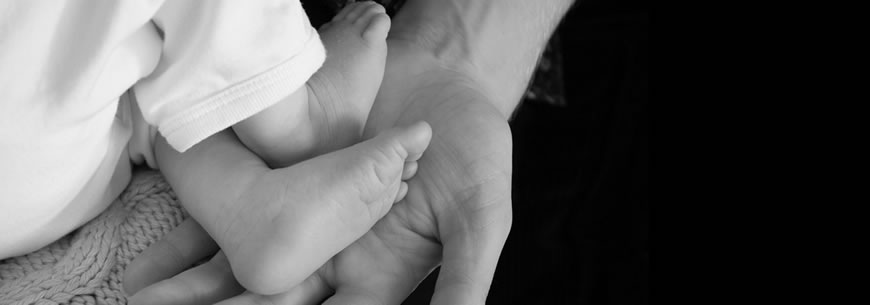In-Toeing in Children
What is in-toeing?
In-toeing refers to the appearance when a child walks or runs that their foot or toes point inwards towards each other. It is often referred to as being “pigeon-toed”.

Is it normal?
In most people when you watch them walk their feet point slightly outwards. This is the result of development of the leg bones as you grow. In some people they have a tendency to turn their feet either straight forwards or inwards. In children, if their toes point inwards, it can often correct itself by the age of 8 or 9.
What causes in-toeing in children?
As you grow your bones change shape and also gradually change the direction in which your foot points. From the toes up to the hip joint, different bones can be aligned in different ways and can affect the way the foot points:
- Metatarsus adductus – This is a condition in the foot bones where the foot bones themselves are turned inwards
- Interal tibial torsion – This is a condition affecting the shin bone where it is very slightly twisted inwards and therefore the foot turns inwards a little
- Increase femoral anteversion – This is a condition near the hip where the thigh bone is twisted slightly causing the foot to subsequently to turn inwards
What are the symptoms?
The most noticeable symptom of in-toeing is either the parents noticing the way the child is lying as an infant or walks or alternatively the child constantly trips over their feet when they run or do sports. Their legs can be turned inwards so their kneecaps are pointing towards one another.
How do you diagnose the condition?
Accurate clinical examination of the child assessing the alignment of all the lower limb joints from hip to feet can determine the source of the in-toeing. This examination assesses the “rotational profile” of the childs legs. X-Rays are seldom required to assess the feet. They can be taken to look for any other associated conditions for example developmental hip problems if needed.
How is it treated?
It depends on the primary cause of the in-toeing:
- Metatarsus adductus
Most cases resolve spontaneously within the first year of life and the rest over the childhood years with no intervention. Surgery is seldom required.
- Internal tibial torsion
As an infant this in-toeing often corrects itself, again with no treatment of any kind. If it persists after the age of 8 or 9 and a functional deficit such as tripping is apparent then surgery to “untwist” the shin bone can be performed.
- Increased femoral anteversion
Similar to tibial torsion, the foot to subsequently turn inwards but as the child grows can become less apparent however after the ages of 8 or 9 if it is a significant functional problem the child can undergo surgery to “untwist” the femur.
When should you have surgery?
The natural history of these conditions is that they tend to “grow out” as the child develops. If the child has a functional disability where the are in discomfort consistently or their in-toeing is causing problems when walking or running then it is worth seeking specialist Orthopaedic advice on surgery.




